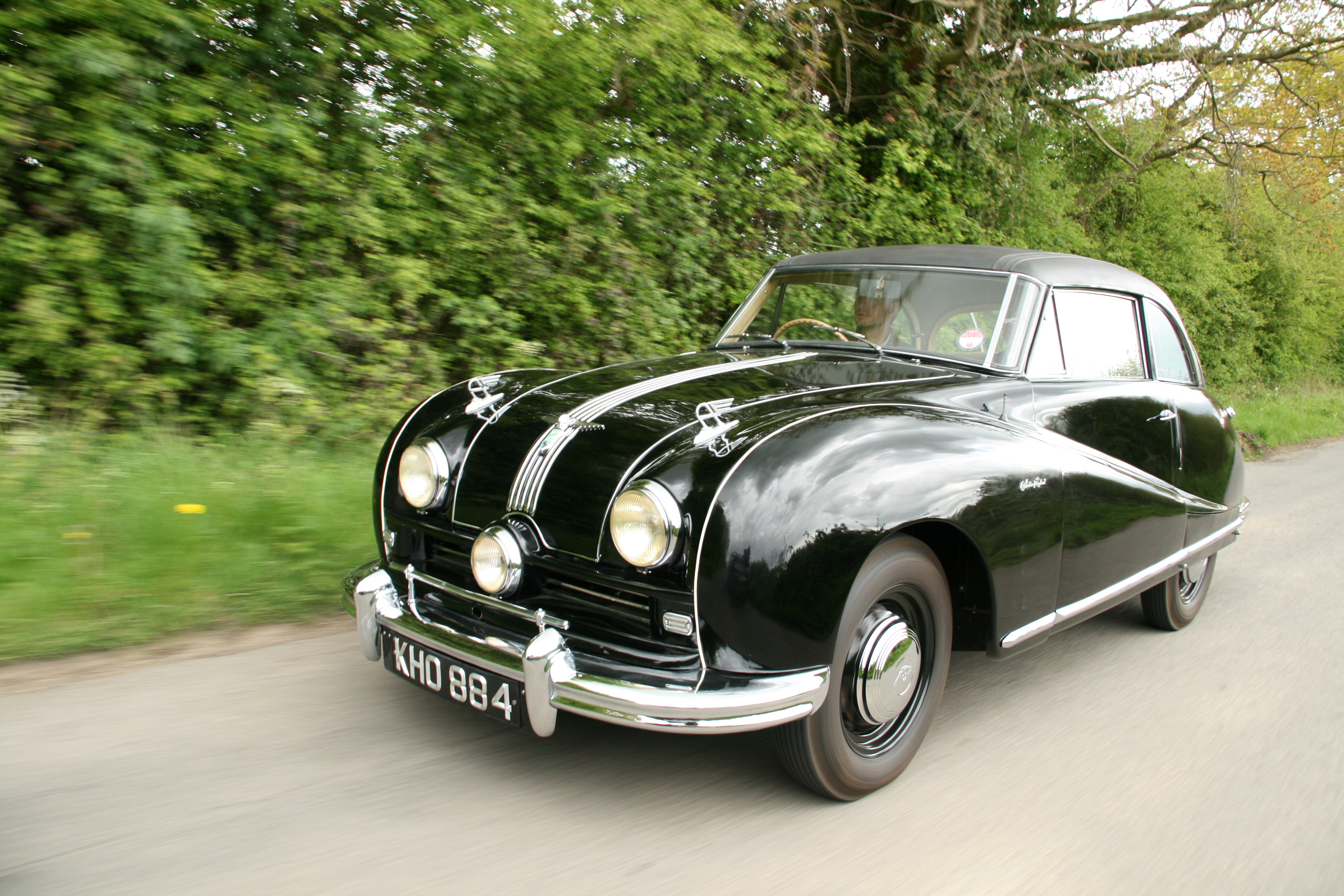-
Insurance
InsuranceAbout our productsLearn about insuringGet a quote Get current values, historical values, model history and more.
-
Valuation
ValuationHagerty valuation toolLook up a vehicle value Get current values, historical values, model history and more.
-
Events
EventsHagerty official eventsHagerty ClubhouseEvent calendar
-
Entertainment
EntertainmentMore to explore
- Portal login
1952 Austin A90
Atlantic 2dr Saloon 2.7 L
Vehicle values by condition
Fair
Condition 4
£6,700
#4 cars are daily drivers, with flaws visible to the naked eye. The chrome might have pitting or scratches, the windshield might be chipped.
Good
Condition 3
£12,200
#3 cars could possess some, but not all of the issues of a #4 car, but they will be balanced by other factors such as a fresh paint job or a new, correct interior.
Excellent
Condition 2
£16,300
#2 cars could win a local or regional show. They can be former #1 cars that have been driven or have aged. Seasoned observers will have to look closely for flaws.
Concours
Condition 1
£22,700
#1 vehicles are the best in the world. The visual image is of the best car, unmodified, in the right colours, driving onto the lawn at the finest concours.
Insurance premium for a
1952 Austin A90 Atlantic 2dr Saloon 2660
valued at £12,200
£124.76
/ year*
History of the 1950 - 1952 Austin A90

1950 - 1952 Austin A90
When it was launched at the 1948 London Motor Show the Austin A90 Atlantic Convertible’s flamboyant trans-Atlantic appearance was certainly noted by visitors and the motoring press. The A90 was originally available as a four/five seater two-door drophead and was subsequently joined by a four/five seater two-door coupe, both with an OHV engine driving their rear wheels. Production of the Austin A90 finally ceased in 1952.
The A90 Atlantic Convertible was intended by Austin to principally appeal to affluent US buyers. Beneath the distinctive coachwork was independent front coil springs with a rear live axle and leaf springs, hydro-mech all-drum braking and a cruciform-braced chassis. The four-speed gearbox was operated by a steering column lever and the A90’s standard equipment included a heater, a central fog lamp an EKCO radio and an adjustable steering column. Very unusually for the period, the A90 was available with electrically operated side windows and hood while the gold-faced instruments added a further touch of trans-Atlantic glamour.
In October 1949, the Convertible was joined by the Austin A90 Atlantic Coupe, which was mechanically identical and could be specified with a fabric-covered roof. The Coupe further boasted the distinctive feature of a rear windscreen that could be raised and lowered via a handle above the driver’s mirror. In 1951 the A90s were given an all-hydraulic brake system and Austin ceased building the Convertible in that same year, with the Coupe continuing to be made until September 1952.
Power for the Austin A90 Atlantic was provided by a 2,660cc OHV S4 engine with twin SU carburettors. The transmission was a four-speed box with synchromesh on the top three gears.
The chassis of the Austin A90 Atlantic was derived from the A40 Devon (q.v.) so despite its dramatic looks it is not an out-and-out sports car; its ride and road manners reflect its family saloon underpinnings. However, although the Atlantic’s intended USA customer base did not take to a tourer with only four cylinders in a market sector that was dominated by six- and eight-cylinder cars, the A90’s top speed was a very respectable 91 mph, with 0-60 in under 17 seconds. The 2.6-litre engine’s durability is demonstrated by the fact that at over a seven-day period at the Indianapolis Motor Speedway in 1949 an Austin A90 Atlantic broke 63 US stock car records.
Over the past few years, interest has greatly increased in the Austin A90 Atlantic, with both the Convertible and the Coupe having the own unique appeal - and each is guaranteed to provoke great interest at any car show.
The Austin A90 Atlantic’s engine went on to power the Austin-Healey 100. For too many years the former was often sacrificed in the restoration of the latter but today this does benefit the spare mechanical parts situation. Brightwork and trim details can be very hard to find while sourcing any example of the A90 Atlantic might require considerable patience. Of the limited production run around 800 were sold in Australia and the Austin’s survival rate was limited by its propensity to rust.
The Atlantic’s body was replete with mud traps and the coachwork of any surviving example should be carefully examined. Inside the A90’s cabin, hide-trimmed seats in a poor condition will not be cheap to restore.
The Austin A90 Atlantic’s main domestic competitor was the Riley RMC but the Austin’s blend of US opulence on a British scale had few if any British rivals.
Hagerty Newsletter
Get your weekly dose of car news from Hagerty UK in your inbox

ADVERTISEMENT